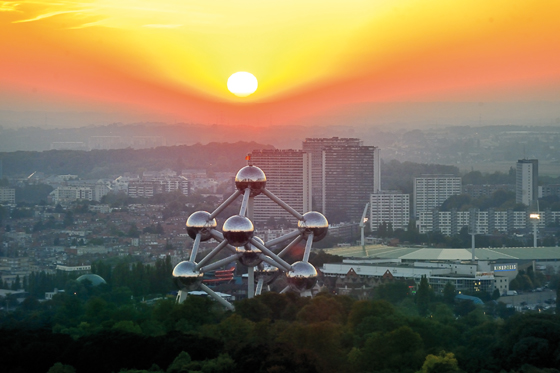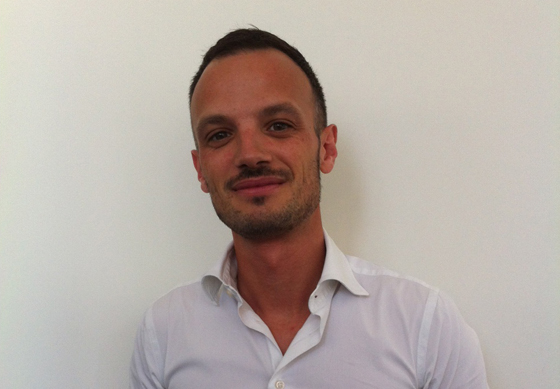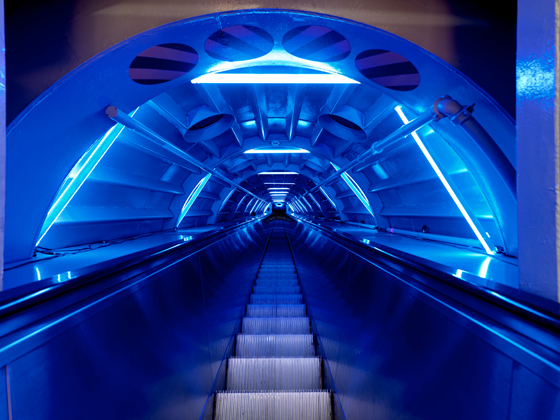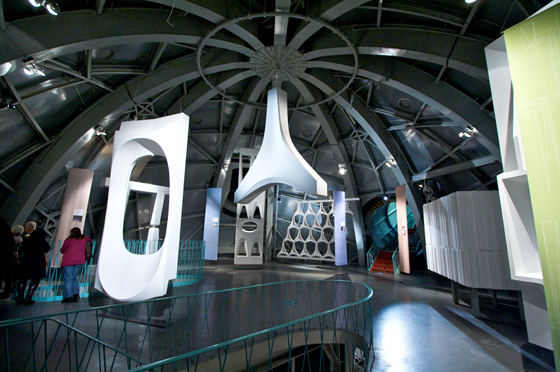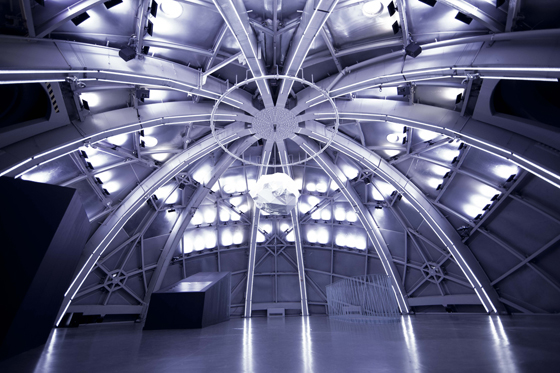The Atomium: Cultural and contemporary
Text by TLmag
Brussels, Belgium
13.12.13
Icon of the Brussels skyline, sculptural or architectural curiosity, the Atomium is increasingly regarded as not just a symbolic landmark and tourist attraction, but also as a cultural centre in the north of Brussels. Interview with Arnaud Bozzini, the head of exhibitions. By Catherine Édouard
TLmag: With the exhibitions Brunfaut, Architectonic and series of Intersections, the Atomium is shifting its programming towards architecture and design. Is this deliberate on your part or a fad?
Arnaud Bozzini: Architecture, design, and more generally the notion of progress and humanism are part of the DNA of the Atomium. It seems only logical to study these topics in a place that was created as part of the Universal Exposition of 1958 which adopted the slogan “Evaluation of the World for a more Humane World”. This thematic projects the knowledge of the time into the future, demonstrating a faith in democracy, progress and technology at the service of mankind. The modernist credo is no different. So it’s logical to organise public exhibitions that reveal not only the personality of major Belgian modernist architects, but also the mindset of the time, the prevailing humanism that transpires in a thorough formal research. Showing contemporary design is also partly a desire to participate in large urban events such as Design September. The idea is to select three autonomous practices in Flanders, Wallonia and Brussels, illustrating the diversity of industrial creativity in our country.
TLmag: On the occasion of the latest edition of the contemporary art fair Art Brussels, you inaugurated a new series: Artview. Is this initiative a part of the same desire to link the Atomium to major cultural events in Brussels or do you have other ambitions?
A. B.:We need to put things into perspective. This was an exhibition on a modest scale, a sort of capsule that takes an unusual look at contemporary art through the selection of pieces by a private collector from his own collection. The approach was intended to take art out of its usual context, i.e. the museums, galleries… and generate an unexpected discourse. It could have been educational, we preferred to make it more humane. Through the vision of a collector, his choices, his doubts, his audacity, the visitor can appropriate art that might seem elitist and scholarly. The first to be invited, Galila, addressed contemporary art through the prism of his emotions, without over intellectualising the subject. The subjective and emotions outweigh reason and speculation. It’s something that the public understands and responds to. Furthermore, this event is supported by the Atomium Foundation, whose members are particularly sensitive to, and invest a significent amount of time in the art world. The opening of this micro-exhibition has attracted an audience that often neglects the Atomium, who prefer instead to visit museums that by definition are more specialised. In coming back to visit this monument created by Waterkeyn, they become our ambassadors.
TLmag: The remarkable exhibition ID#2013 Poème Numérique embraces sound, light and digital arts. What is the meaning of this intervention?
A. B.: It’s still connected to the ever-present history of the building. In 1958, Le Corbusier collaborated with Iannis Xenakis and Edgard Varese to animate the Philips pavilion with their “Poème électronique” (Electronic Poem), an experimental piece combining sound and light. “ID#2013” is a reference to this historic moment. Le Corbusier’s interest in the plurality of disciplines in 1958 continues to prevail today and inspire the programming of the Atomium. Three collectives intervened in the exhibition: Visual System, [Anti VJ] and LAb[au], who took over the spaces to install works that question the material and immaterial qualities of light and space through a clever cocktail of sound, light, moving images, rythm and colours that converge.
TLmag: And in the future?
A. B.: We asked Arik Levy to think about an event that contaminates public space through a partly ephemeral installation of four monumental sculptures. Enlisting the help of major international figures is also part of the legitimate ambitions of the Atomium.
....
Atomium
Square de l'Atomium
1020 Bruxelles/Brussels
T. : +32 (0) 2 475 47 75
Open every day from 10am to 6pm

